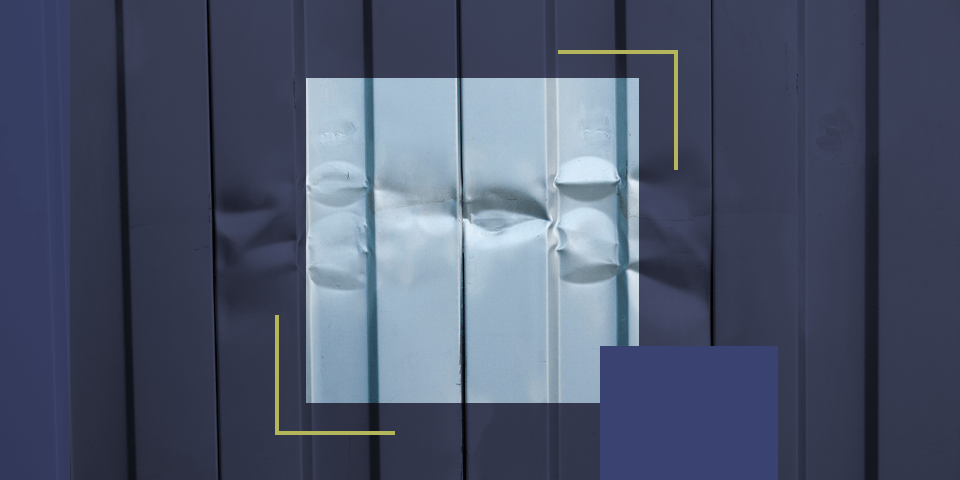
Mistakes happen. One minute, you’ve got plenty of room between the rear of your car and the garage door — the next, you hear the sound of an impact. While backing into a garage door can be frustrating, there are steps you can take to prevent further damage and ensure your family’s safety.
Table of Contents
1. Stop Your Car and Make Sure Everyone Is Okay
Whether you’ve bumped the garage or backed fully into the door, do not move your car right away. Instead, stay calm. Turn off the engine and put the parking brake on. Then check with your loved ones — inside the vehicle and the house. If no one is injured, you can shift your focus to the damage caused to the garage and your car.
2. Perform an Initial Inspection
Before you move your car, check for damage inside and out. Depending on the extent of the damage, it may be unsafe to move your vehicle without professional assistance. During your initial walk-through, take lots of photos, as you may need these to file claims with your home and auto insurance.
3. Carefully Move Your Car
If you feel safe to move your car, do so cautiously. Ensure everyone is clear of the garage, as moving your vehicle may cause the door to fall or shift.
If you hit your door from the inside, move the car forward slightly. If you hit it from the outside, move your car down the driveway or onto the street.
4. Assess the Damage
Now it’s time to take a closer look at your garage door and your car. Most of the time, the garage takes the brunt of the damage, with vehicles suffering a few scrapes or scuffs. You’ll want to inspect your garage door and its components closely, checking for dented, scraped or broken parts.
Some of the most common issues caused by backing into a garage door include:
- Broken or damaged door panels
- Off-balance or off-track doors
- Warped or broken brackets or support hardware
- Snapped torsion or extension springs
- Bent tracks
- Damaged photo eye sensors
Again, take pictures of anything that appears broken or damaged. If you notice obvious damage, do not proceed to the next steps. Contact a professional garage door repair technician immediately.
5. Check Whether the Door Operates
If the garage door appears fine, your next step is to check if it still functions. Exercise extreme caution when performing this action. If there is an underlying issue or misalignment, attempting to operate the door could cause further damage to the system.
You can test the door’s operability manually. Disconnect the automatic opener by slowly pulling the T-shaped handle attached to the emergency release cord. Then, physically move the door up and down. Be alert for:
- Lack of movement
- Difficulty moving
- Unusual noises
If anything seems off, stop what you are doing and contact a garage door professional for service.
6. Schedule a Garage Door Repair
Serious garage door damage is not always apparent. Even if you don’t find any visible breaks or dents, there may be an underlying issue that could impact the function of your door. If everything appears alright, schedule a garage door repair so a professional can inspect the intricate mechanisms that run the system. They can either confirm that everything is operational or provide a repair estimate.
Contact Crawford Door Sales for Twin City Garage Repairs
For more than 60 years, Crawford Door Sales has helped Twin City homeowners with all their garage door needs. If you back into your garage door, call our family-owned company for outstanding repair services.
Let us assess the damage and keep your door in tip-top shape. We can replace damaged panels and address off-balance or off-track garage doors. We can also repair or replace any damaged or broken components — such as rollers, tracks and hinges.
The professionals at Crawford Door Sales look forward to getting your day and your garage back on track. Contact us today to schedule a repair service.

